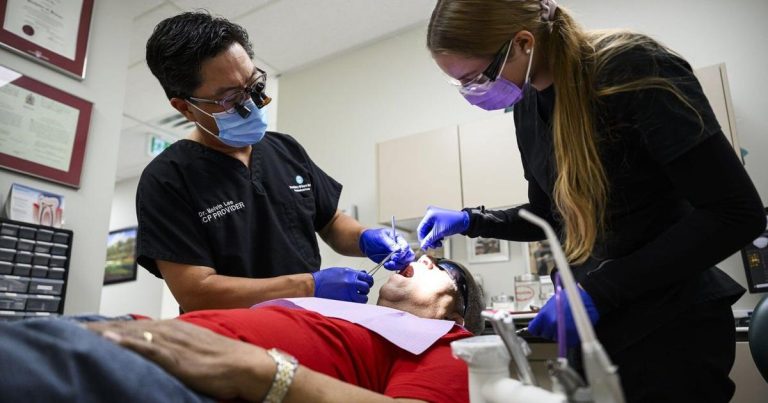Dental Hygienists Association Disputes Claims of Worker Shortage, Citing Data and Systemic Issues
The Canadian Dental Hygienists Association (CDHA) has refuted recent reports of a dental hygienist shortage, labeling them as "misinformation" and asserting that the real issue lies in a mismatch between available positions and hygienists’ expectations. Citing data from their 2022 member survey and the Labour Force Survey, the CDHA argues that a significant number of qualified hygienists are seeking employment but are encountering unfavorable working conditions, precarious employment models, and inadequate compensation. These factors, they say, contribute to the perceived shortage rather than an actual lack of qualified professionals. The association emphasizes that the focus should be on creating sustainable and attractive work environments to retain existing hygienists and attract new entrants to the profession.
The CDHA’s position challenges the narrative presented by some dental clinics and industry stakeholders who have voiced concerns about difficulties in filling hygienist positions. The association contends that these claims often fail to acknowledge the underlying issues driving hygienists away from traditional employment models. Their survey data reveals that a substantial portion of hygienists are seeking full-time, permanent positions with benefits and professional development opportunities. However, many dental clinics continue to offer primarily part-time or temporary positions with limited benefits, creating a disconnect between the needs of hygienists and the employment landscape. This disconnect, they argue, fuels the perception of a shortage while qualified hygienists remain underemployed or leave the profession altogether.
Further supporting their argument, the CDHA highlights the growing trend of hygienists pursuing alternative career paths, including opening independent practices, working in public health settings, or pursuing further education. This diversification, they suggest, demonstrates the adaptability and resourcefulness of dental hygienists, but also reflects a dissatisfaction with traditional clinic employment models. The CDHA argues that addressing the root causes of this dissatisfaction, such as inadequate compensation and precarious employment, is crucial for ensuring a stable and thriving dental hygiene workforce. They suggest that focusing on creating supportive and rewarding work environments will be more effective than simply increasing the number of graduates, as new entrants may also be deterred by the existing challenges within the profession.
A key aspect of the CDHA’s argument revolves around the issue of compensation. They argue that the current salary levels for dental hygienists often fail to reflect the demanding nature of the work, the level of education required, and the associated costs of maintaining licensure and professional development. This, combined with the often-precarious nature of employment in the sector, makes it difficult for hygienists to build stable careers and achieve financial security. The association believes that fair and competitive compensation is essential for attracting and retaining qualified hygienists. They also emphasize the importance of benefits, including paid sick leave, vacation time, and professional development opportunities, as key factors influencing hygienists’ career choices.
The CDHA acknowledges that regional variations may exist in the availability of dental hygienists. However, they maintain that characterizing the situation as a widespread national shortage is inaccurate and obscures the fundamental issues that need to be addressed. They call for a collaborative approach involving dental clinics, regulatory bodies, educational institutions, and hygienist associations to create a more sustainable and equitable employment landscape. This, they say, includes promoting fair compensation practices, offering more stable employment models, and supporting professional development opportunities. The association believes that by addressing these underlying issues, the dental industry can ensure a robust and thriving dental hygiene workforce for years to come.
Ultimately, the CDHA advocates for a shift in focus from simply increasing the supply of dental hygienists to creating a more attractive and sustainable work environment. They believe that investing in the existing workforce through better compensation, benefits, and professional development opportunities is the most effective way to address the perceived shortage and ensure the long-term health of the dental hygiene profession. This, they argue, will benefit not only hygienists themselves, but also the patients they serve by ensuring access to quality oral healthcare. The CDHA’s stance challenges the conventional narrative surrounding the workforce issue and calls for a more nuanced understanding of the factors influencing hygienists’ career choices and the overall health of the dental hygiene profession. They emphasize that focusing on working conditions and professional development is crucial for attracting and retaining qualified professionals and ensuring a sustainable future for the dental hygiene workforce.


